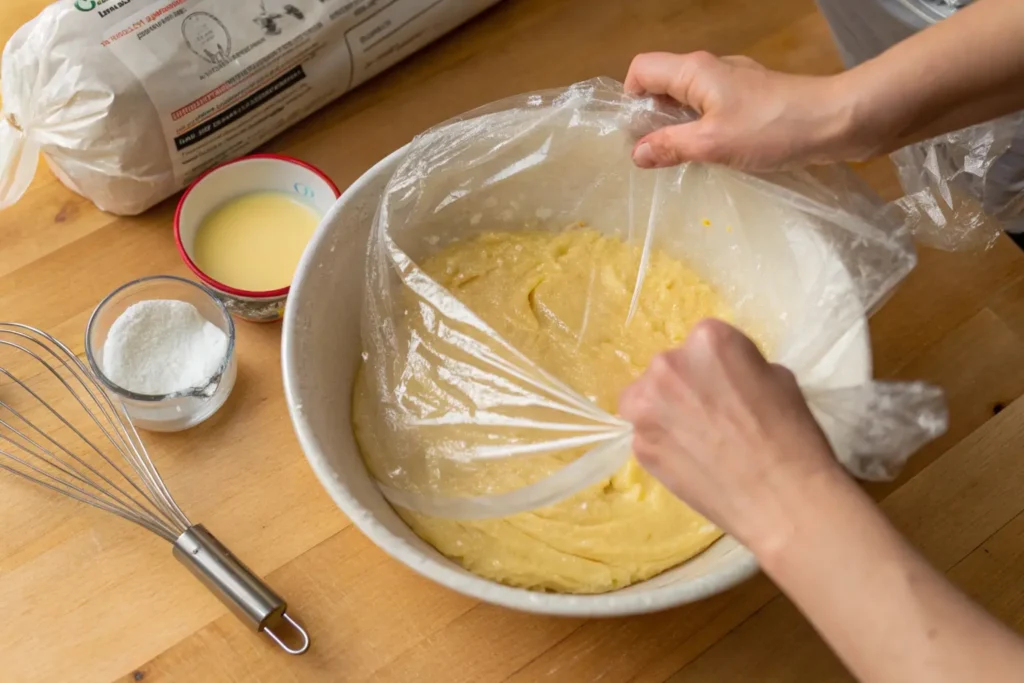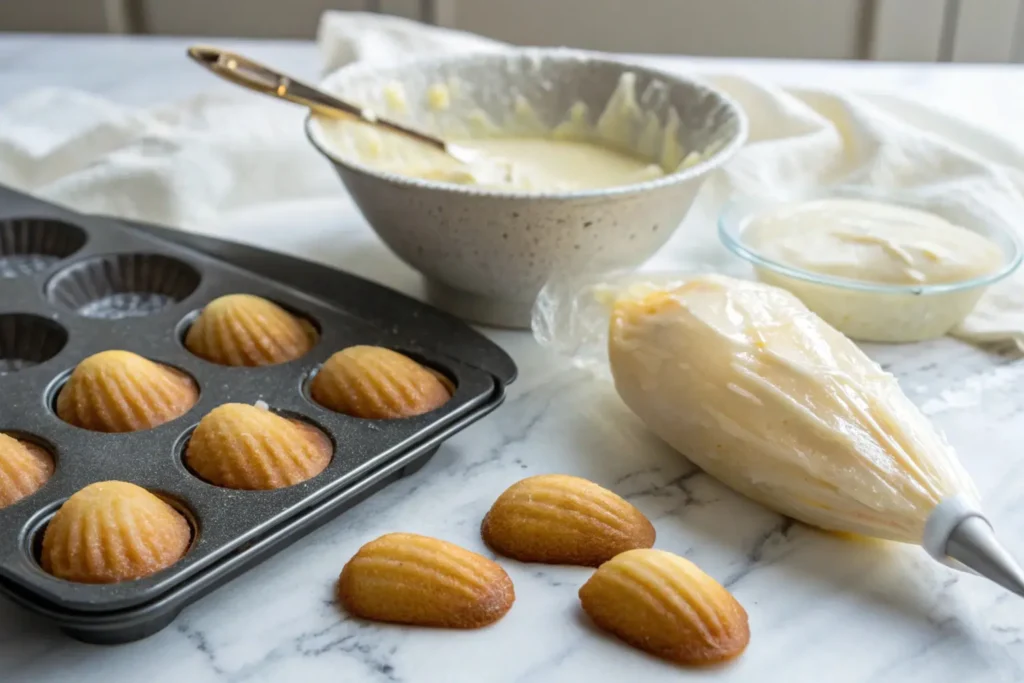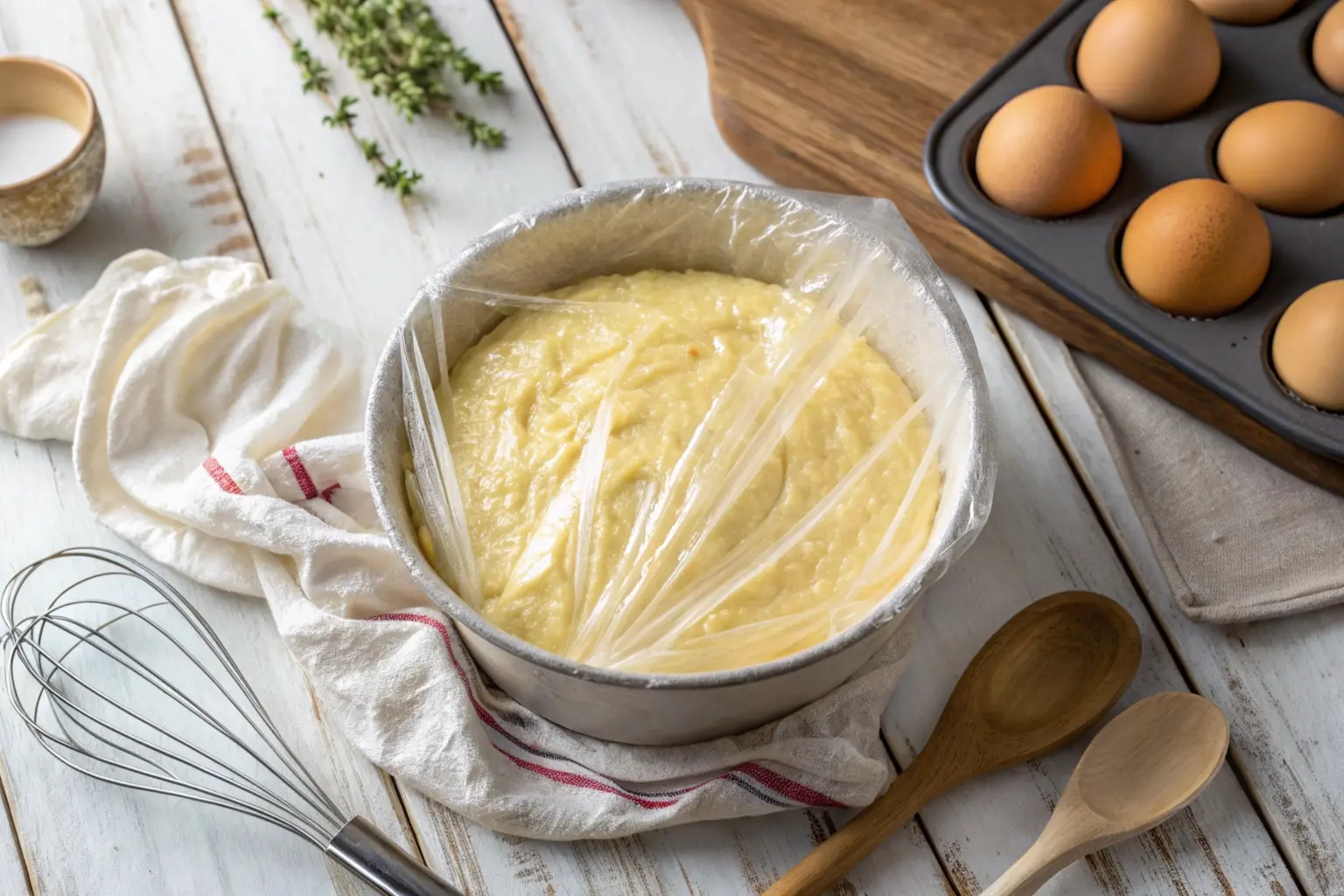Madeleines are more than just delightful little cakes—they’re a symbol of French baking finesse. Their iconic hump and tender crumb make them a favorite treat worldwide. But did you know that chilling the batter is a crucial step in achieving their perfect texture and shape? Why do you chill madeleine batter? This question often arises among novice bakers eager to master the art of making these delicacies.
Chilling the batter isn’t just a suggestion; it’s a step backed by science and tradition. From flavor enhancement to texture refinement, the benefits of this simple step are immense. In this article, we’ll dive into the reasons behind chilling, explore its impact on the baking process, and address common questions to help you bake the best Madeleines possible.
Table of Contents
The Science Behind Chilling Madeleine Batter
How Chilling Affects Batter Consistency
Chilling the batter allows the ingredients to settle and firm up, resulting in a thicker and more manageable consistency. When the batter is cold, it spreads less during baking, which is crucial for maintaining the distinct Madeleine shape. This controlled spread helps preserve the ridged shell pattern on one side and the signature hump on the other.
Moreover, chilling solidifies the butter in the batter, which slows down the baking process. As the batter bakes, the butter melts gradually, creating a rich, tender crumb. If you’ve ever wondered why do you chill madeleine batter, this is one of the key reasons—it’s all about achieving that ideal texture.
The Role of Temperature in Creating the Iconic Madeleine Hump
The most recognizable feature of a Madeleine is its hump, and chilling the batter plays a direct role in its formation. When the cold batter meets the hot oven, the temperature contrast creates a burst of steam. This rapid steam release causes the batter to rise sharply in the center, forming the characteristic hump.
Without chilling, the batter might spread too quickly, resulting in flat Madeleines. By chilling, you’re setting the stage for the perfect rise, ensuring your Madeleines have both visual appeal and texture.
Benefits of Chilling Madeleine Batter
Improved Flavor Development Through Chilling
One of the less obvious benefits of chilling your Madeleine batter is the enhanced flavor. As the batter rests in the fridge, the ingredients have time to meld together. This process, called maturation, deepens the flavor profile, making your Madeleines taste richer and more satisfying.
Chilling also allows enzymes in the flour to break down starches into simpler sugars, adding a subtle sweetness to the batter. This natural transformation can elevate the flavor of your Madeleines without requiring additional ingredients. If you’ve ever asked, why do you chill madeleine batter, it’s not just about the texture—it’s also about creating a more flavorful bite.
Enhanced Texture and Structure in Madeleines
Chilling the batter also significantly improves the texture and structure of your Madeleines. When the butter in the batter solidifies, it prevents the cakes from spreading too much during baking. This ensures that the iconic shell shape and hump remain intact.
Additionally, the thicker consistency of chilled batter results in a denser crumb that’s tender yet firm. It’s the perfect balance of soft and structured. For bakers seeking to master the art of French pastries, understanding why do you chill madeleine batter is crucial for achieving that delicate, melt-in-your-mouth texture.
How Long Should You Chill Madeleine Batter?
Recommended Chilling Times for Best Results
The amount of time you chill your batter can make all the difference in your Madeleines. Ideally, the batter should rest in the fridge for at least 30 minutes. This gives the ingredients enough time to settle and ensures that the batter is firm enough to hold its shape during baking.
For even better results, many professional bakers recommend chilling the batter for 1–2 hours. This extended rest allows for greater flavor development and optimal texture. If you’re short on time, even a quick 15-minute chill can help improve the outcome. However, for the best answer to why do you chill madeleine batter, patience truly pays off.
What Happens When You Chill Batter Overnight vs. Short-Term
Chilling the batter overnight takes the benefits of resting to the next level. The longer rest period allows the flavors to develop more fully and ensures a consistent, thick batter. Overnight chilling is especially useful if you’re prepping ahead for an event or a special occasion.
However, there’s a limit to how long you should chill the batter. Leaving it in the fridge for more than 24 hours can cause the ingredients to separate or dry out. If you need to store the batter longer, consider freezing it instead to preserve freshness and consistency.
Common Mistakes When Chilling Batter
Over-Chilling: When Too Much Time in the Fridge Becomes a Problem
Chilling the batter is important, but overdoing it can cause issues. Leaving your batter in the fridge for too long—especially beyond 24 hours—can lead to separation of ingredients or drying out. This affects both the flavor and texture of your Madeleines. If the butter hardens excessively, it may not mix evenly during baking, resulting in unevenly baked cakes.
To prevent over-chilling, always cover your batter tightly with plastic wrap and avoid extended refrigeration. Freezing is a better option if you need to store it for longer than a day.
Skipping the Chill: Why It Impacts Your Final Bake
On the flip side, skipping the chilling step entirely can be equally problematic. Without chilling, the batter spreads too quickly in the oven, leading to flat Madeleines that lack their characteristic hump. The warm, unchilled batter also bakes unevenly, producing a texture that’s too dense or dry.
If you’ve ever wondered why do you chill madeleine batter, it’s to ensure the cakes bake with the right structure, flavor, and texture. Skipping this step compromises all of these qualities.
Proper Wrapping to Prevent Skin Formation on Batter

When chilling batter, proper wrapping is critical. Exposed batter can develop a dry, crust-like skin on the surface, which is difficult to incorporate back into the mixture. Always use plastic wrap and press it directly against the batter’s surface to seal out air.
FAQs About Chilling Madeleine Batter
Can You Skip the Chilling Step?
Skipping the chilling step might seem like a time-saver, but it can drastically affect the quality of your Madeleines. Chilling ensures the batter has the right consistency for controlled spreading and proper rise. Without it, the batter spreads too quickly in the oven, leading to flat and unevenly baked Madeleines. Additionally, the hump—the signature feature of this French delicacy—is unlikely to form without the rapid temperature contrast provided by cold batter.
If you’re wondering why do you chill madeleine batter, it’s not just about aesthetics. Chilling also improves the overall texture and ensures the buttery flavor shines through. Even a short chill can make a noticeable difference. If you’re pressed for time, aim for at least 15–30 minutes in the fridge.
Does Chilling Affect Madeleine Flavor?
Absolutely! Chilling isn’t just about structure—it’s also about flavor development. When the batter rests, the ingredients meld together, allowing flavors to deepen and become more harmonious. The process of maturation enhances the buttery notes and balances the sweetness. Moreover, enzymes in the flour break down starches into sugars, resulting in a subtle sweetness that makes your Madeleines taste richer.
If you skip the chill, you may notice that your Madeleines lack complexity in flavor. For the best results, chill your batter for at least an hour. For those curious about why do you chill madeleine batter, the flavor boost alone is reason enough.
What’s the Ideal Temperature for Chilling Batter?
The ideal temperature for chilling Madeleine batter is around 4°C (40°F), the average temperature of a refrigerator. At this temperature, the butter solidifies just enough to firm up the batter without freezing it. This balance is critical for achieving the perfect texture and rise during baking.
If you plan to chill the batter for longer periods, ensure it’s stored in an airtight container or tightly covered with plastic wrap. This prevents the batter from drying out or absorbing odors from the fridge. Proper storage is key to maintaining the quality and consistency of your batter.
Conclusion and Final Tips for Chilling Madeleine Batter
Why Chilling Is a Non-Negotiable Step
Chilling Madeleine batter isn’t just a suggestion; it’s a critical step for ensuring your cakes turn out perfectly every time. The process helps control the spread of the batter, allowing the Madeleines to bake evenly and form their iconic hump. It also contributes to a tender crumb and enhances the buttery flavor that makes these treats so irresistible.
If you’re still questioning why do you chill madeleine batter, consider this: skipping the chill can result in flat, dense cakes that lack the distinct texture and flavor Madeleines are known for. Taking a little extra time to chill the batter ensures your efforts in the kitchen pay off with bakery-quality results.
Extra Tips for Chilling Madeleine Batter

To make the most of this crucial step, follow these expert tips:
- Experiment with chilling times. Start with 30 minutes for a quick bake, but try chilling overnight to see how the flavor and texture improve.
- Use a piping bag for portioning. Chilled batter can be firm and harder to work with. Transfer it to a piping bag before chilling for easier handling.
- Check your refrigerator temperature. Make sure your fridge is set to the optimal chilling temperature (around 4°C or 40°F) to prevent over-firming or drying out the batter.
- Batch prep for convenience. If you’re making multiple batches, divide the batter into smaller portions before chilling. This makes it easier to bake in stages without over-handling the batter.
By understanding why do you chill madeleine batter and implementing these techniques, you can consistently achieve the perfect balance of flavor, texture, and appearance. Your Madeleines will not only look beautiful but also taste divine. Enjoy baking!

